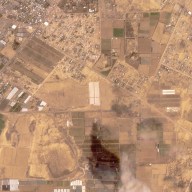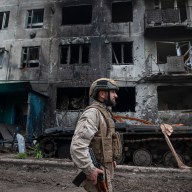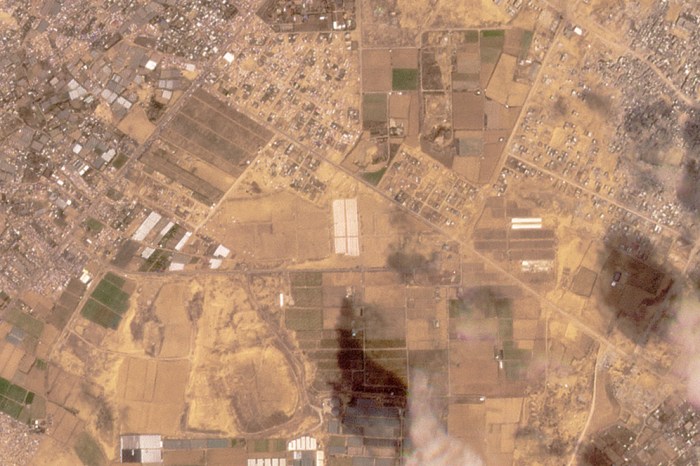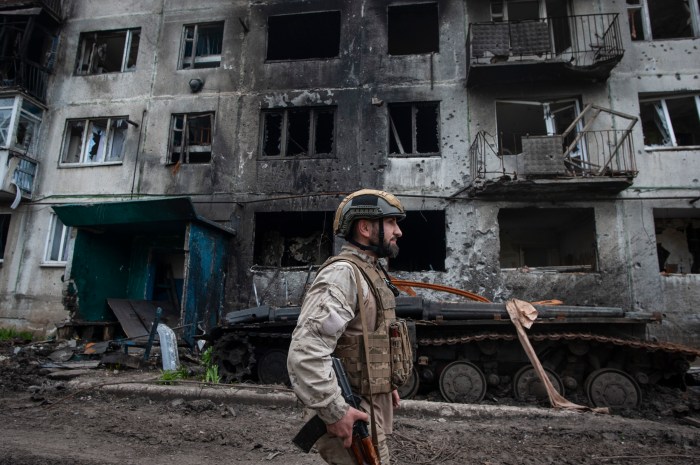OTTAWA – Just days after the first handguns were issued to Canada’s border guards, one of them had to draw his sidearm at a British Columbia crossing to control a bizarre character whose car was bristling with weaponry.
“He hesitated before answering the simplest questions, and seemed to have a ‘thousand yard stare’,” says an internal report on the late-night incident last summer at the Surrey, B.C.-Blaine, Wash., border station.
“In general, he presented an extremely strange and unsettling demeanour.”
Asked whether he had any weapons, the unidentified American acknowledged there was a pistol in the glove compartment of his rented PT Cruiser – and tried to grab it.
Officer Grant Patterson immediately shouted: “Don’t reach for it! Exit the vehicle with your hands where I can see them. Do it now!,” says the censored report, obtained by The Canadian Press under the Access to Information Act.
The 27-year-old burly man co-operated, and a further search of the car turned up a second concealed weapon, a loaded pump-action shotgun.
A bulge observed in the man’s rear pocket suggested he might be concealing even more weapons, prompting another officer, Christopher Van Nes, to draw his sidearm – the first time a Canadian border guard has done so on the job.
The man was ordered to the ground and handcuffed. He was not carrying a weapon, but a thorough search of his vehicle turned up ammunition, a bullet-proof vest, a double-edge dagger, a black SWAT-style balaclava, and other gun paraphernalia in addition to the loaded 40-calibre pistol from the glove compartment.
“The overall picture formed from the contents of the vehicle in my mind was that of someone planning to use firearms for a purpose dangerous to the public,” Patterson wrote of the Aug. 4 incident.
The officers consulted with Crown legal experts and, for reasons not spelled out in the documents, returned the man to the U.S. without his weapons.
Weeks later there was a second gun-drawn episode, this time at the Blue Water Bridge crossing at Sarnia, Ont., when a belligerent, foul-mouthed truck driver from Las Vegas tried to enter Canada with a shipment bound for Toronto.
The driver, asked to undergo an inspection, “approached me, stepping within 18 inches of my face. In a loud tone (he) stated that he needed to leave so he could deliver his load,” officer Robert Whitson wrote in his report on the Sept. 19 incident, also obtained under the Access to Information Act.
A search produced a loaded revolver hidden in the truck, prompting another officer, Donald Landry, to draw his sidearm and shout: “Peace officer. Stop. Get down. Do it now. Show me your hands.”
A further search turned up a loaded, semi-automatic pistol and more ammunition in the truck. The man was arrested, but his subsequent fate was not disclosed in the released records.
The two incidents are the first in which Canada’s border guards have been able to use guns to resolve a threat. Previously, they could only call in the local police, use pepper spray and batons or, as they have done on a handful of occasions, abandon their posts for their own safety.
Since then, there’s been only one further incident, on Dec. 19, also at Sarnia’s Blue Water Bridge crossing.
“A border services officer drew his duty firearm during a secondary examination of an individual,” Chris Williams, a Canada Border Services Agency spokesman, said in an interview.
“As with all such incidents, agency officials have thoroughly reviewed the matter and have confirmed that established standards and protocols were followed.”
Williams declined to release further details on the December incident, or any information on agency protocols, citing “operational reasons.”
Last year, the Conservative government set aside $175 million over two years to begin equipping border guards with pistols, eventually choosing the 9mm Beretta PX4 Storm as the standard sidearm.
Over the next decade, 4,800 officers will eventually be armed at land and marine border points. So far, more than 170 have completed the training.
Officers are required to file detailed reports whenever they draw or discharge their weapons. No shots have been fired to date.


















